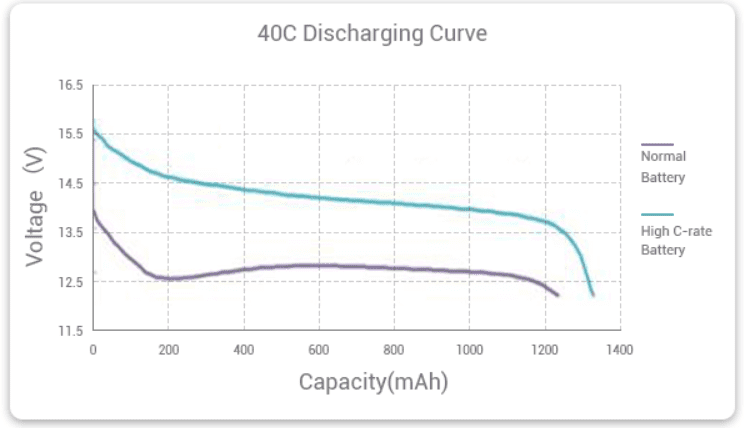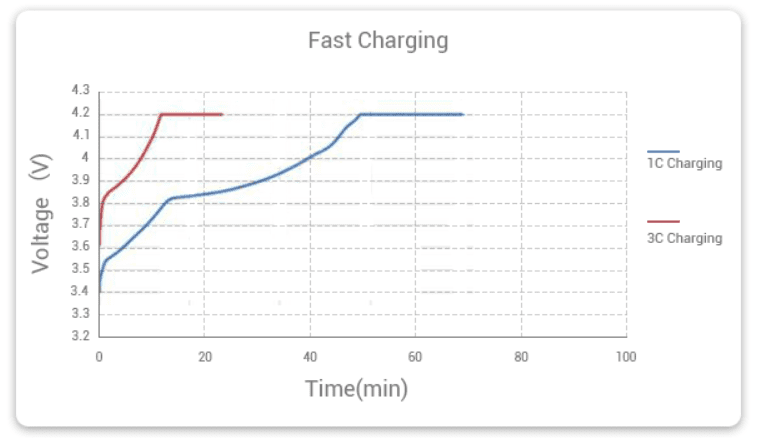Vnice Power
Industry News
High Discharge Rate Battery OR Standard Discharge Battery
19/4/2024
What is the differences between a high discharge rate battery and a standard discharge rate battery
Introduction
A battery has a high rate that is the charge and discharge capability of a lithiumion polymer battery with respect to the standard rate. A highrate battery is divided into a discharge rate and a charge rate, and a “CRating” is used to indicate the ratio of the charging and discharging current of a battery.
Normally, high discharge rate batteries can be fast charged. In high discharge rate batteries, the lithium ions are embedded in the negative graphite during charging whereas in the discharging portion, the lithium ions are embedded in the positive electrode. The act of embedding the lithium ions into the negative graphite requires more precision thus resulting in a lower charging rate than discharge.
Another distinction that can be made is how a high discharge rate battery will have better temperature stability and tolerance than regular discharge batteries.
There are two graphs to help us to understand these two batteries better.
Discharge curve
The first one is a discharge curve, or what’s known as a voltage plateau, of a normal battery and a high crate battery.
The capacity of the two batteries is the same, and the test current is 40C. We can see the discharge voltage of the high crate battery ( blue line ) is higher and how the voltage drop is smoother and the capacity greater.
Furthermore, the high discharge battery provides a nominal voltage of 14.5V whereas the standard battery only provides that of 12.5V. This is due to the low internal resistance of a higher Crate, which results in lower losses during high current discharge. This allows the discharge plateau and capacity to be maintained at a high level.
Fast charging time
The fellow picture represents a record of how long it takes to fully charge a normal and a high crate battery. The red line represents a high crate battery fast charging at 3C. It only takes 15 minutes to fully charge.
In contrast, the normal battery ( blue line ) charging at 1C, which takes a lot more time to fully charge. Just based on this chart, you can see how a high rate battery saves about 60% more time fast charging than a normal battery charging at 1C.
Fast charge a standard battery
If you fast charge a normal battery, you can easily cause lithium stripping, or otherwise known as lithium plating of the lithium ions. This leads to accelerated deterioration in battery performance. In severe cases, you can cause an internal short circuit and/or even an explosion.
Most consumer applications require only 1C from their batteries. If you need higher discharge rates and faster charging times, you should definitely choose a high rate battery instead.
Application
Highrate batteries are widely used in a variety of fields, such as with drones for aerial and agricultural plant protection purposes, emergency power supplies, model aircraft ( RC ), power tools and many more.
WE OFFER BEST IN CLASS SERVICE FOR YOUR NEEDS
86-13631354535

-

Message


